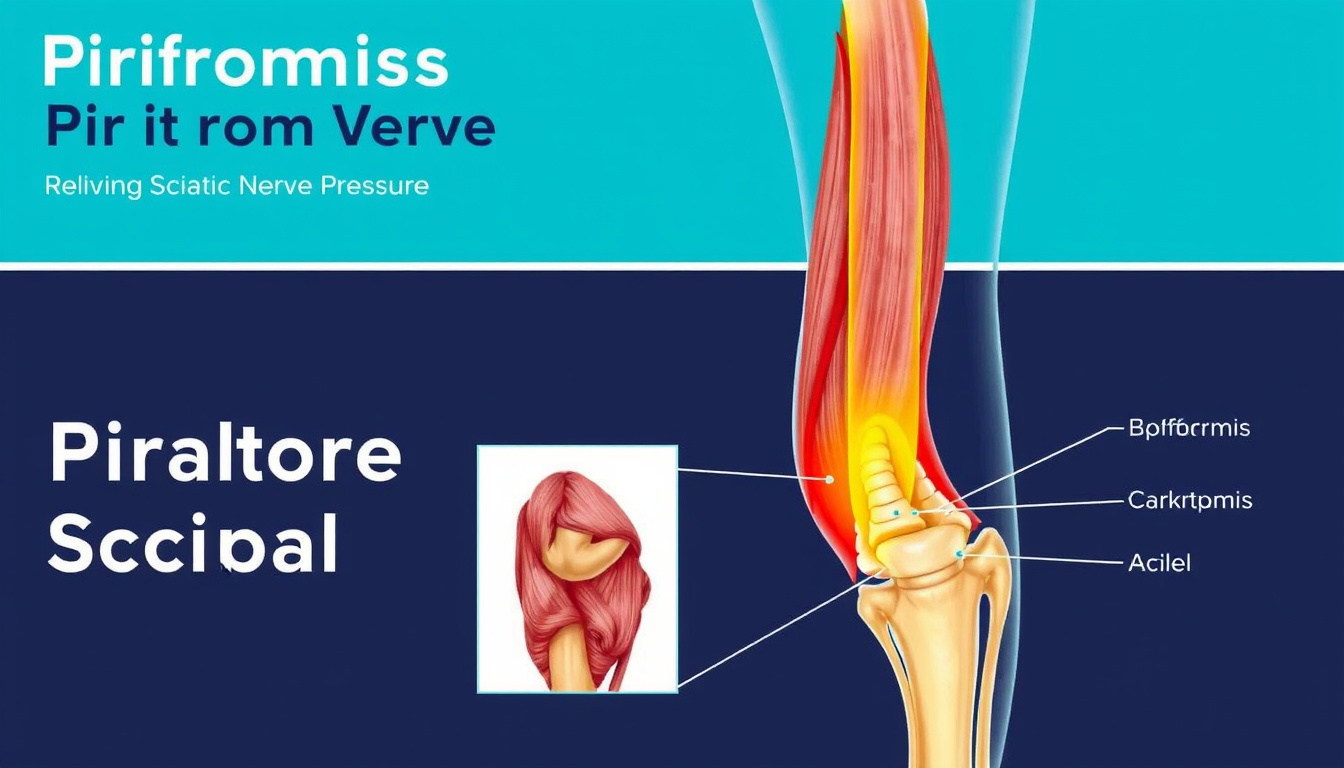Sciatic pain can be debilitating and disrupt your day-to-day life, but one method proven to relieve this discomfort is the piriformis stretch. The piriformis muscle, located deep in the buttocks, can sometimes irritate the sciatic nerve, leading to sharp pain that radiates down the leg. Incorporating targeted piriformis stretch techniques into your routine can help reduce tension, improve mobility, and ease sciatic pain quickly.
In this article, we will explore effective piriformis stretch methods designed specifically to alleviate sciatic nerve discomfort, discuss how to perform them safely, and provide tips for maximizing relief.
Understanding the Piriformis Muscle and Sciatic Pain
The piriformis muscle connects the lower spine to the upper thigh bone and plays an important role in lower body movement and stability. When this muscle becomes tight or inflamed, it can compress or irritate the nearby sciatic nerve—a condition known as piriformis syndrome. This compression causes pain, tingling, or numbness along the path of the sciatic nerve, commonly down the back of the leg.
A targeted piriformis stretch can effectively release tightness, reduce nerve pressure, and diminish sciatic pain quickly. Before implementing stretches, it is essential to recognize symptoms such as:
- Sharp pain in the buttocks
- Radiating pain down one leg
- Difficulty sitting or walking comfortably
- Tingling or numbness radiating to the foot or toes
If symptoms are severe or persistent, always consult a healthcare professional for accurate diagnosis and treatment options.
Key Benefits of the Piriformis Stretch for Sciatic Relief
Including a piriformis stretch in your daily routine offers several advantages:
- Reduces muscle tightness: Stretching lengthens the piriformis muscle, easing tension that could compress the sciatic nerve.
- Improves flexibility: Increased flexibility helps maintain proper alignment, preventing future irritation.
- Promotes blood flow: Enhanced circulation aids healing and reduces inflammation.
- Relieves pain rapidly: Many people report noticeable relief after performing these stretches, often within minutes.
- Supports posture: By maintaining healthy musculature in the hips and low back, piriformis stretches improve overall posture and reduce strain.
Top 5 Effective Piriformis Stretch Techniques
Below are five effective piriformis stretches to relieve sciatic pain quickly. Always perform these stretches gently and hold each position for 20 to 30 seconds, repeating 2–3 times per session.

1. Seated Piriformis Stretch
- Sit on a chair with your feet flat on the floor.
- Cross your right ankle over your left knee, forming a figure-four shape.
- Gently lean forward, keeping your back straight, until you feel a stretch in your right glute and hip.
- Hold, then switch sides.
2. Supine Piriformis Stretch (Figure Four Stretch)
- Lie on your back with both knees bent and feet flat on the floor.
- Cross your right ankle over the left thigh, just above the knee.
- Reach your hands behind your left thigh and gently pull it toward your chest.
- Feel the stretch in the right glute and hip.
- Hold, then switch sides.
3. Standing Piriformis Stretch
- Stand with your feet hip-width apart.
- Cross your right leg over your left, placing your right foot just outside your left foot.
- Slowly bend your knees and sit back as if sitting into a chair.
- Keep your chest lifted and weight on your heels.
- Hold, then switch sides.
4. Supine Knee-to-Opposite-Shoulder Stretch
- Lie flat on your back with legs extended.
- Bend your right knee and slowly bring it toward your left shoulder, using your hands to assist gently.
- You should feel a stretch in your glute and hip area.
- Hold, then switch sides.
5. Pigeon Pose (Yoga Stretch)
- Start in a tabletop position on hands and knees.
- Bring your right knee forward and place it behind your right wrist, with your shin angled slightly.
- Extend your left leg back, keeping the hips square.
- Slowly lower your torso over your right leg for a deeper stretch.
- Hold, then repeat on the other side.
Tips for Safe and Effective Stretching
To get the maximum benefit while avoiding injury, keep in mind these pointers:
- Warm up before stretching with light walking or gentle movements.
- Avoid bouncing or forcing any stretch; move gently into the position.
- Focus on slow, controlled breathing to relax muscles.
- Stretch both sides equally to maintain balance.
- If you experience sharp pain or discomfort, stop immediately and consult a professional.
The Role of Piriformis Stretch in a Holistic Sciatic Pain Management Plan
While piriformis stretch techniques are powerful tools for immediate relief, they work best combined with other practices such as:
- Physical therapy exercises: Strengthening surrounding muscles to support the hips and spine.
- Postural adjustments: Maintaining proper ergonomics at work and during daily activities.
- Heat and cold therapy: Applying heat to relax muscles or cold packs to reduce inflammation.
- Lifestyle modifications: Incorporating regular low-impact exercise and avoiding prolonged sitting.
Incorporating these strategies helps ensure long-term sciatic nerve health and minimizes the chances of recurrence.
FAQ: Piriformis Stretch and Sciatic Pain Relief
Q1: How often should I do piriformis stretches to relieve sciatic pain?
Aim to perform piriformis stretches at least once or twice daily. Regular stretching increases muscle flexibility and reduces nerve irritation over time, accelerating pain relief.
Q2: Can piriformis stretches cure sciatica permanently?
While piriformis stretches help relieve sciatic pain caused by piriformis syndrome, sciatica can have other causes such as herniated discs. Stretches are part of a comprehensive treatment plan but may not cure all kinds of sciatica.
Q3: Is it normal to feel pain while doing the piriformis stretch?
Sensation of mild stretching discomfort is normal, but sharp pain or numbness indicates overstretching or nerve irritation. Stop and consult a healthcare provider if you experience sharp or worsening pain.
Reliable Sources Support Piriformis Stretching Benefits
A study published in the Journal of Physical Therapy Science supports the effectiveness of piriformis stretching in relieving sciatic symptoms caused by piriformis syndrome. The research highlights that targeted stretches significantly reduce pain and improve function in affected individuals (source).
Take Control of Your Sciatic Pain Today
Sciatic pain doesn’t have to control your life. By incorporating effective piriformis stretch techniques into your routine, you can experience rapid relief from muscle tightness and nerve irritation that cause discomfort. Start gently practicing the stretches outlined here, listen to your body, and combine them with healthy lifestyle habits for best results.
Don’t let sciatic pain hold you back—take action now and unlock the freedom of pain-free movement! If pain persists or worsens, be sure to consult a healthcare professional for personalized guidance tailored to your condition. Your path to comfort and mobility begins with the simple yet powerful piriformis stretch.






